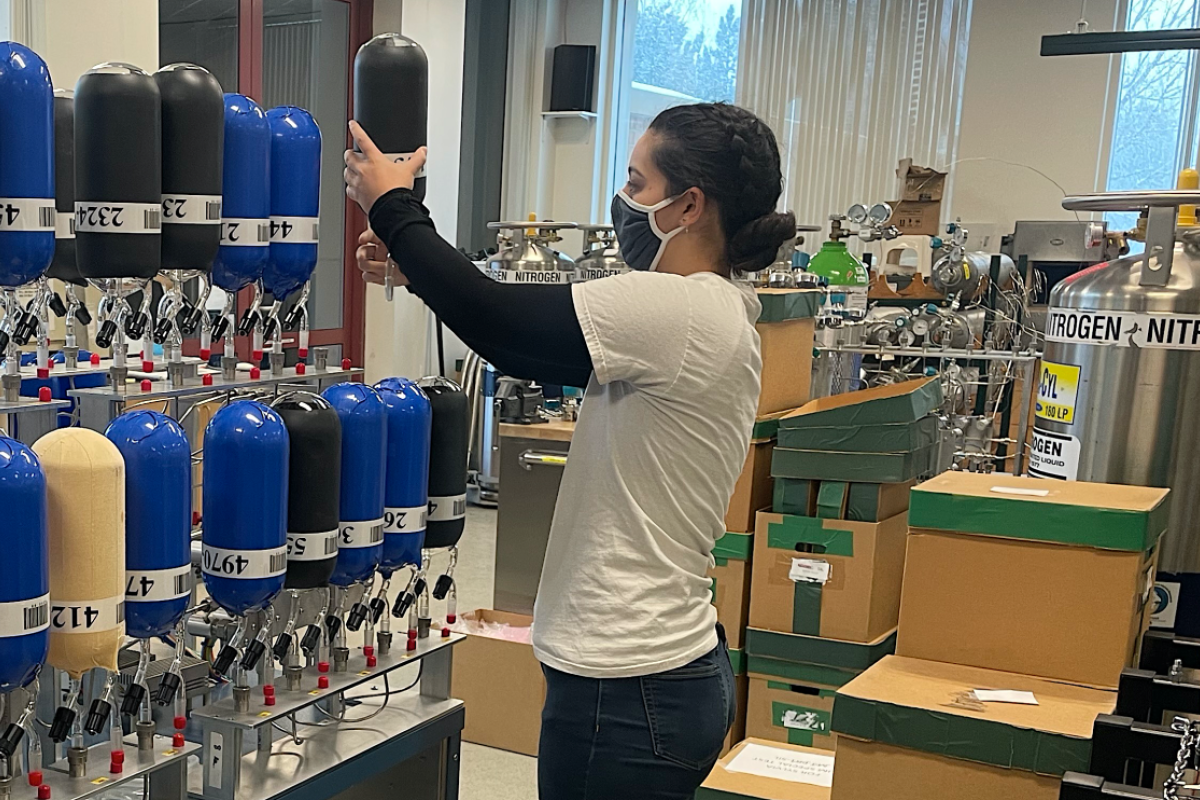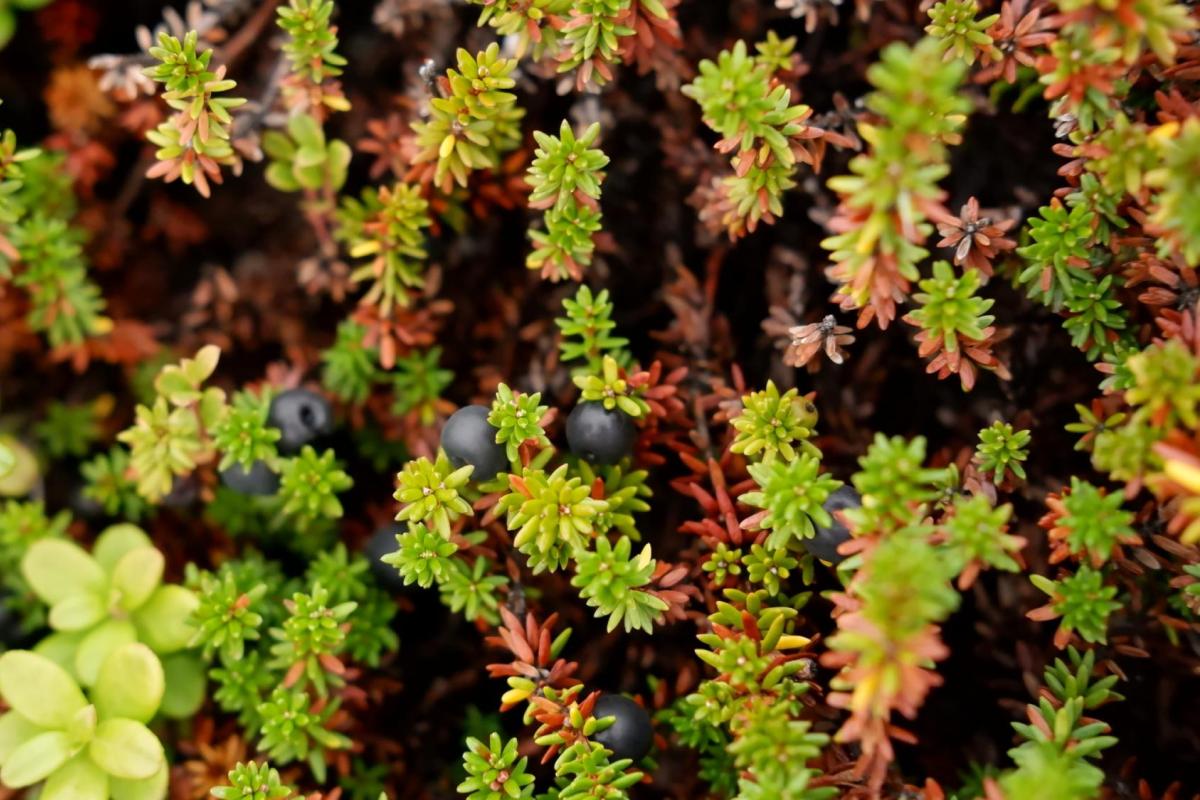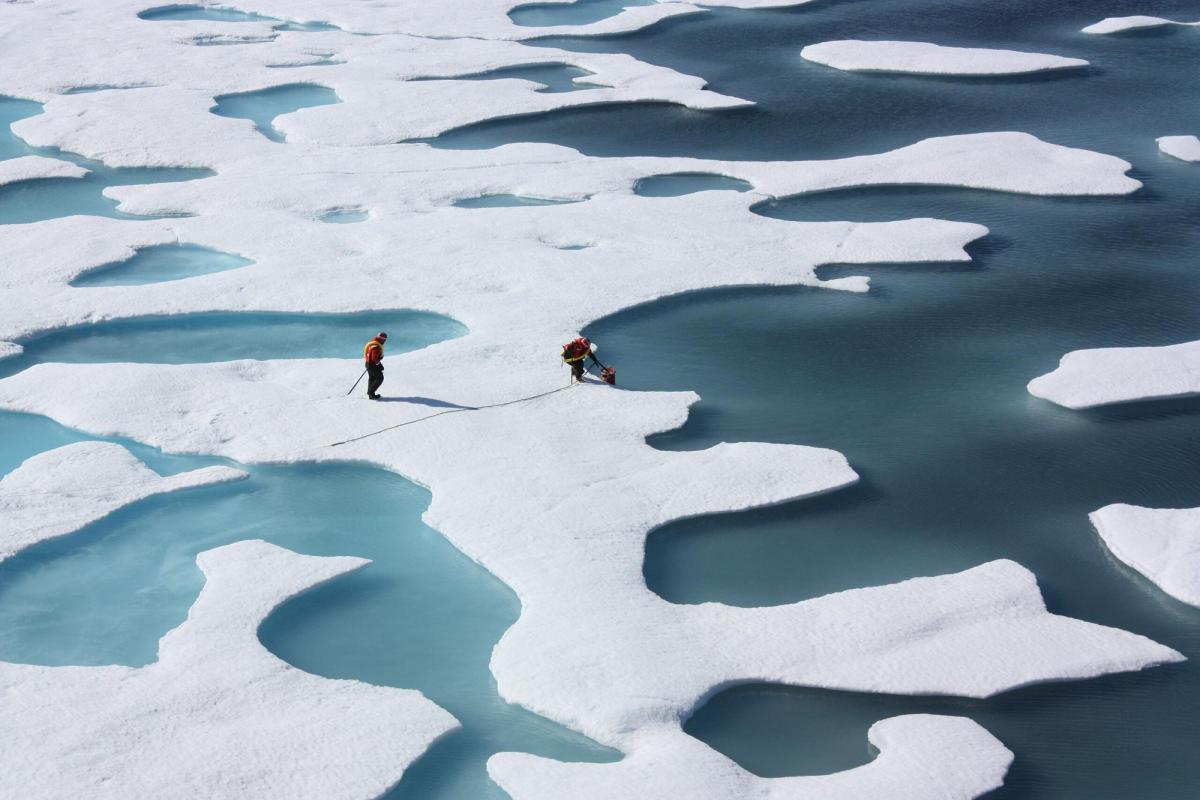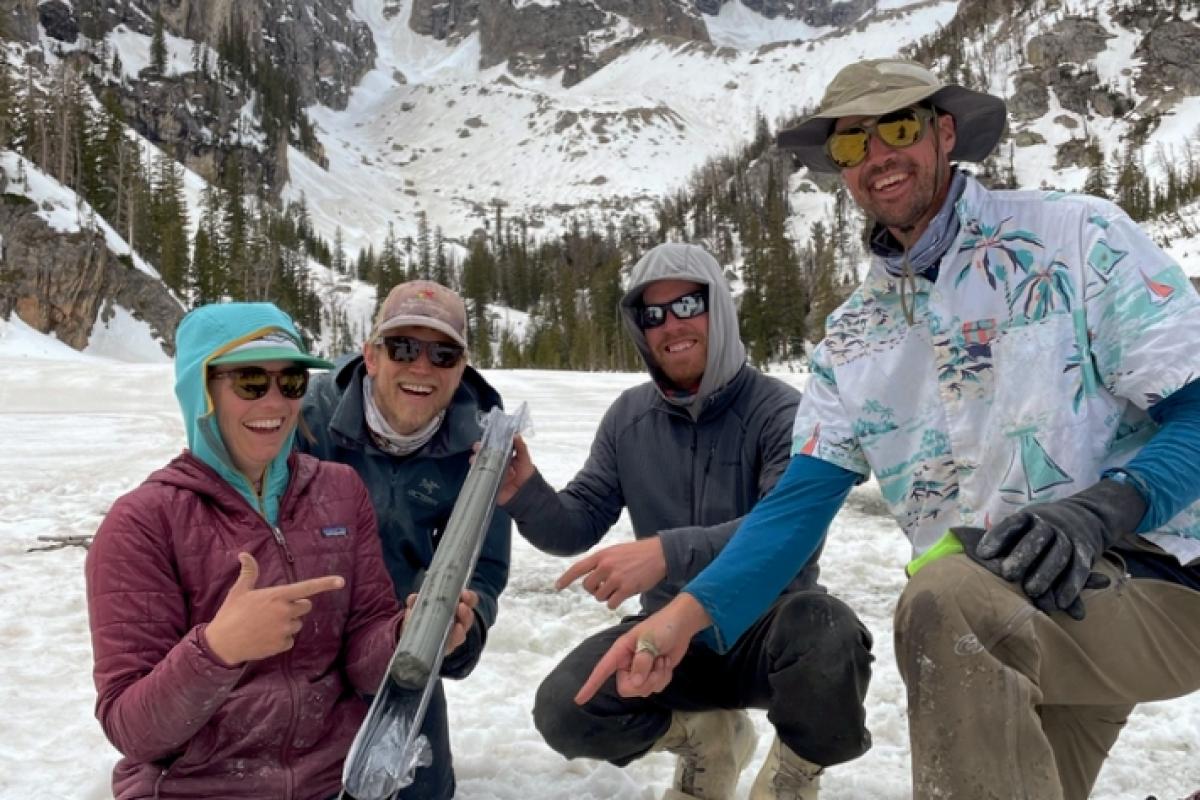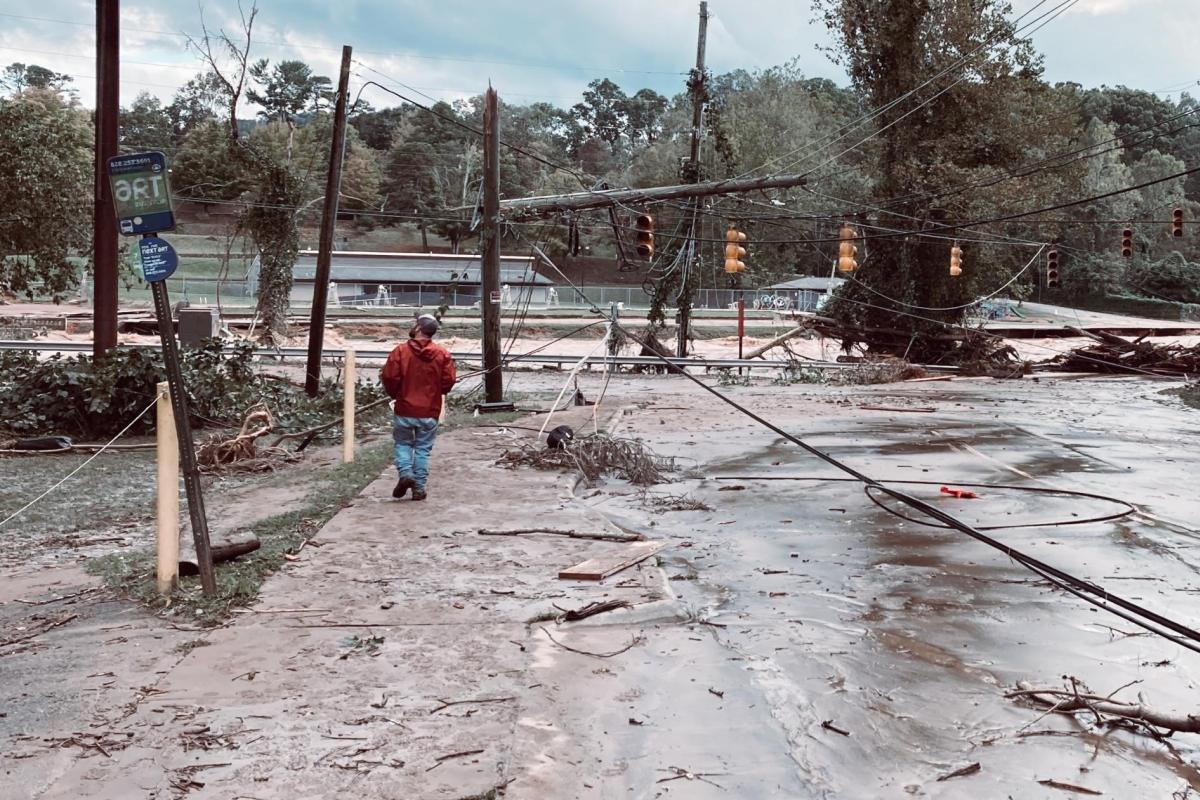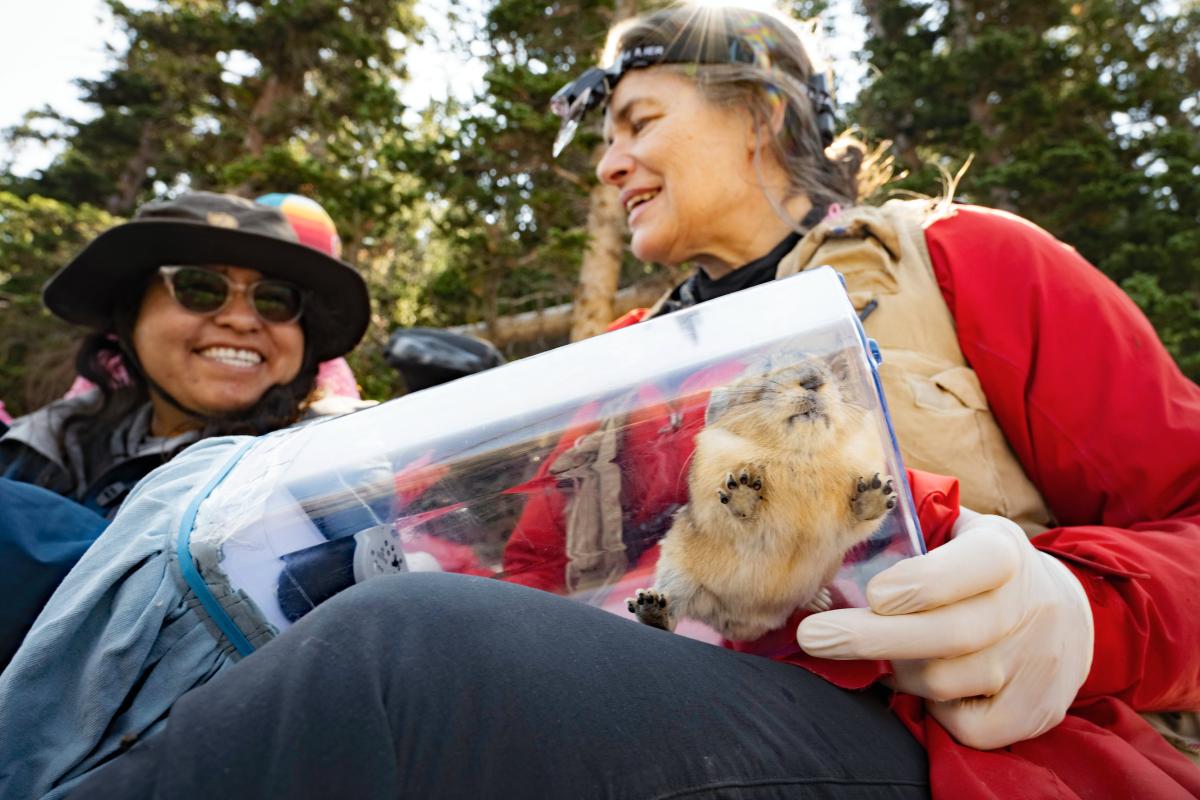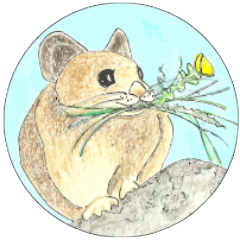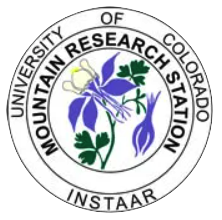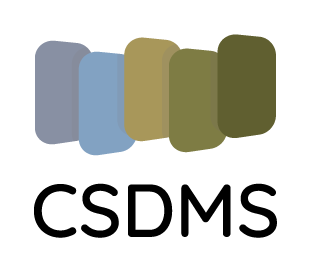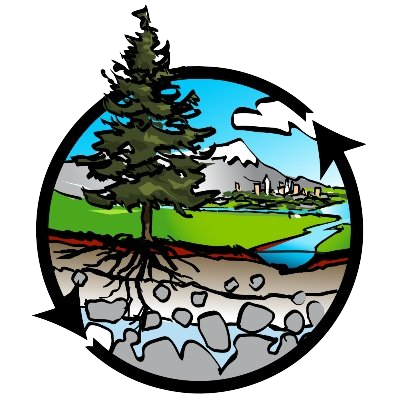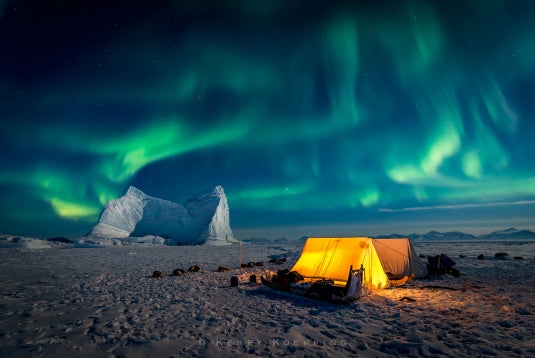Research
Explore our labs & groups, our long-term collaborative programs, and our science articles, theses, and dissertations:
We take a global interdisciplinary approach
INSTAAR's research is truly global in scope, not only spanning latitudes, elevations, and timescales, but crossing multiple science disciplines. This wide range increases our ability to help solve the challenging environmental issues that confront our world.
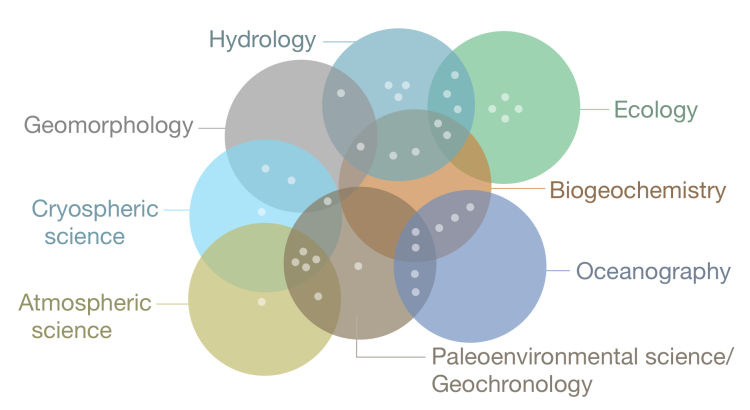
We work across a number of science disciplines, including in the overlap between them. Small white circles represent individual INSTAAR faculty fellows (as of early 2022). Not shown are our non-traditional fields (for a traditional science institute) such as policy, art, and human dimensions. The INSTAAR members who work in these additional fields help broaden our policy relevance and public engagement.
News
Research talks
During the Fall and Spring semesters, INSTAAR hosts research talks that are open to the public. They are usually both online and in person. Speakers can be from inside or outside INSTAAR. Occasionally grad students will present research updates and PhD/MS defenses. In the summer, INSTAAR's Mountain Research Station (MRS) hosts in-person seminars open to the public.
Newer scientific directions
Rooted in our research strengths, ongoing and emerging areas of study directly address the consequences of a changing world on people and communities.
Climate-related extremes & hazards
Predictive models of earth systems & ecosystems
Geoengineering & climate mitigation
Water security, quality, & availability
Research programs
Delve into the long-term collaborative efforts led by INSTAAR members
INSTAAR's national and international collaborations magnify our efforts and frame our work in a larger context. We lead and manage long-running research programs around the world including two U.S. Long-Term Ecological Research (LTER) programs.
Spanning timescales
INSTAAR researchers work across a broad range of timescales, reconstructing environments of the past, studying present conditions and processes, and improving predictions of our uncertain future.
About half of our faculty fellows study past environments and processes. Most of the focus is on the recent geologic past within the last ~2.6 million years (Quaternary period). Many studies are further focused on the last ice age (~115,000 to ~12,000 years ago) and/or the subsequent warmer and more climatically stable Holocene epoch when humans developed intensive agriculture.
Studies within one timescale often help increase understanding in another timescale. For example, measuring carbon dioxide levels in ice cores improves understanding of past environments which, in turn, feeds into climate models that can make better predictions of future climate change.
Research interests by timeframe
The height of each colored box is weighted by the number of INSTAAR Faculty Fellows researching that discipline/timescale (as of early 2022).
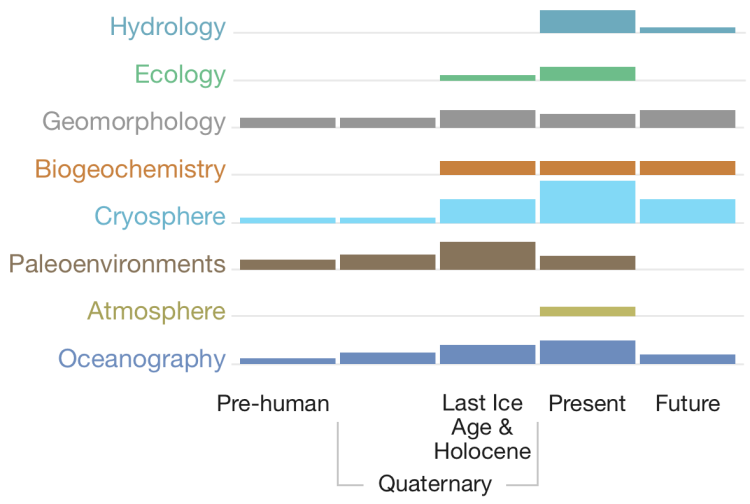
Image at top of this page
Ice Camp Aurora by INSTAAR affiliate Kerry Koepping, with help of his team and Inuit friends. Location: Scoresby Sund, Ittoqqortoormiit, Greenland. Koepping is the founder of the non-profit Arctic Arts Project and is dedicated to strengthening environmental sustainability by illuminating environmental issues through science and visual literacy.


